Hyphantria cunea
(Drury, 1773)
-
 Subfamily: Arctiinae, Arctiini, Spilosomina
Subfamily: Arctiinae, Arctiini, Spilosomina -
 Wingspan: 30-42 mm
Wingspan: 30-42 mm -
 Flight period: May - Aug
Flight period: May - Aug -
 Spread: Common
Spread: Common -
 Host plants: Polyphagous
Host plants: Polyphagous
Information
Hyphantria cunea also called Fall Webworm is a moth of the Erebidae family, Arctiinae subfamily, with a wingspan of 30-42 mm.
In Europe it is visible in the central southern region, from France to Russia and from Denmark to Greece.
In Italy it is absent from the islands. *
Reported for the first time in the 1940s in Hungary and Germany, its presence in Italy dates back to the 1980s in the Po Valley.
Adults are white moths sometimes with small black spots on the front wings,
they appear in two generations from April to May (higher peaks) and from July to August.
The two types of color identify two different forms of the same species although, through careful observation, most of the dotted butterflies are males.
The hind wings are pure white.
The antennae are black with some more or less intense white variegations, bipectinate in the males, serrate in the females.
The head is white, the thorax is white above and golden yellow below. The abdomen is white or yellowish in color.
Each female of Hyphantria cunea is capable of producing up to a thousand light green, almost white eggs in groups of 50-100 units.
From the eggs, after 15-20 days, small larvae emerge which immediately begin to build small silky and whitish nests, grouping 2 or more leaves.
The larvae after the first moults appear yellowish in color with a double row of blackish dots along the body.
The mature larvae reach a length of 30 - 35 mm and are hairy, brownish in color and with longitudinal rows of blackish tubercles;
from these appear tufts of light hair (on the sides) and dark (on the back), these hairs are not stinging and do not cause allergic phenomena. **
The larvae in the first stages feed on the foliar mesophyll, leaving the main veins intact and sometimes even the upper epidermis.
The damage is often devastating for the gregarious nature of the larvae.
As the larvae grow, they become more and more voracious (they can also feed on the ribs) and this activity continues until pupation occurs or between the cracks in the bark
or among the debris at the base of the plant. It winters at the pupa stage.
As already mentioned, this moth is polyphagous and the caterpillars have a predilection for maple (in particular Acer negundo) and mulberry, but spared tree species are rare,
It has also been reported on maize, soybeans, Prunus sp., Malus (apple tree), Pyrus (apple tree), Alnus (alder) and Populus sp. (poplars).
* Lepidoptera mundi https://lepidoptera.eu/ - Fauna Europea https://fauna-eu.org/
** http://www.eurogreen.net/hyphantria-cunea-drury/
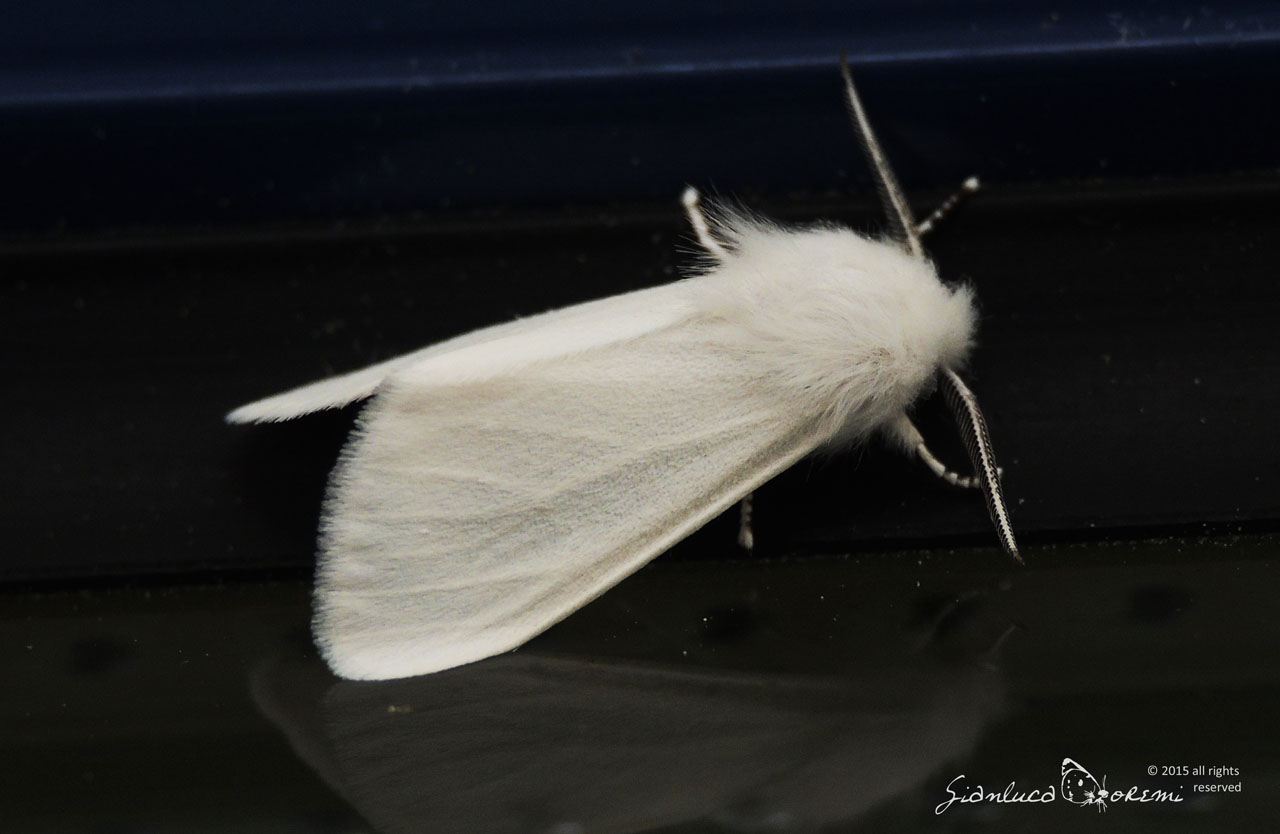
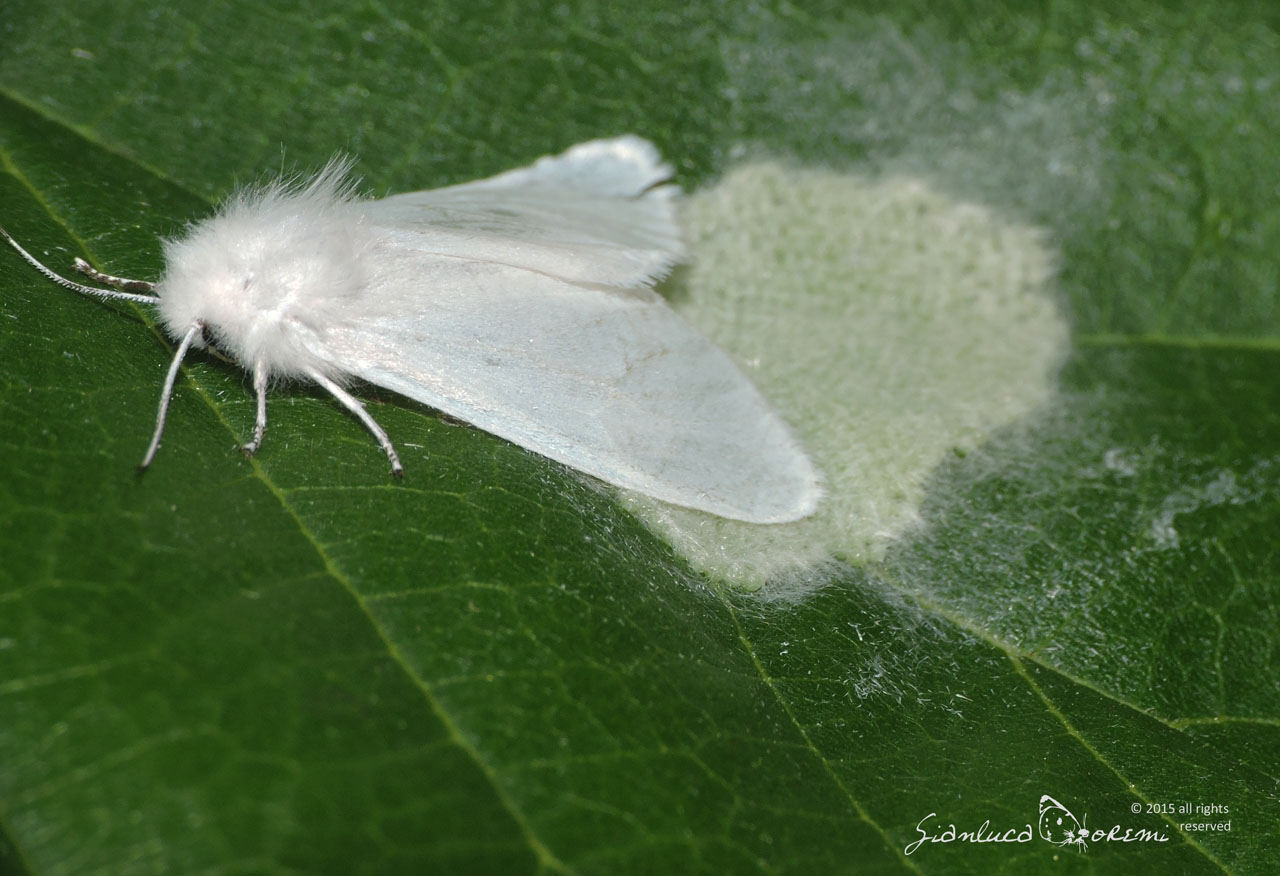



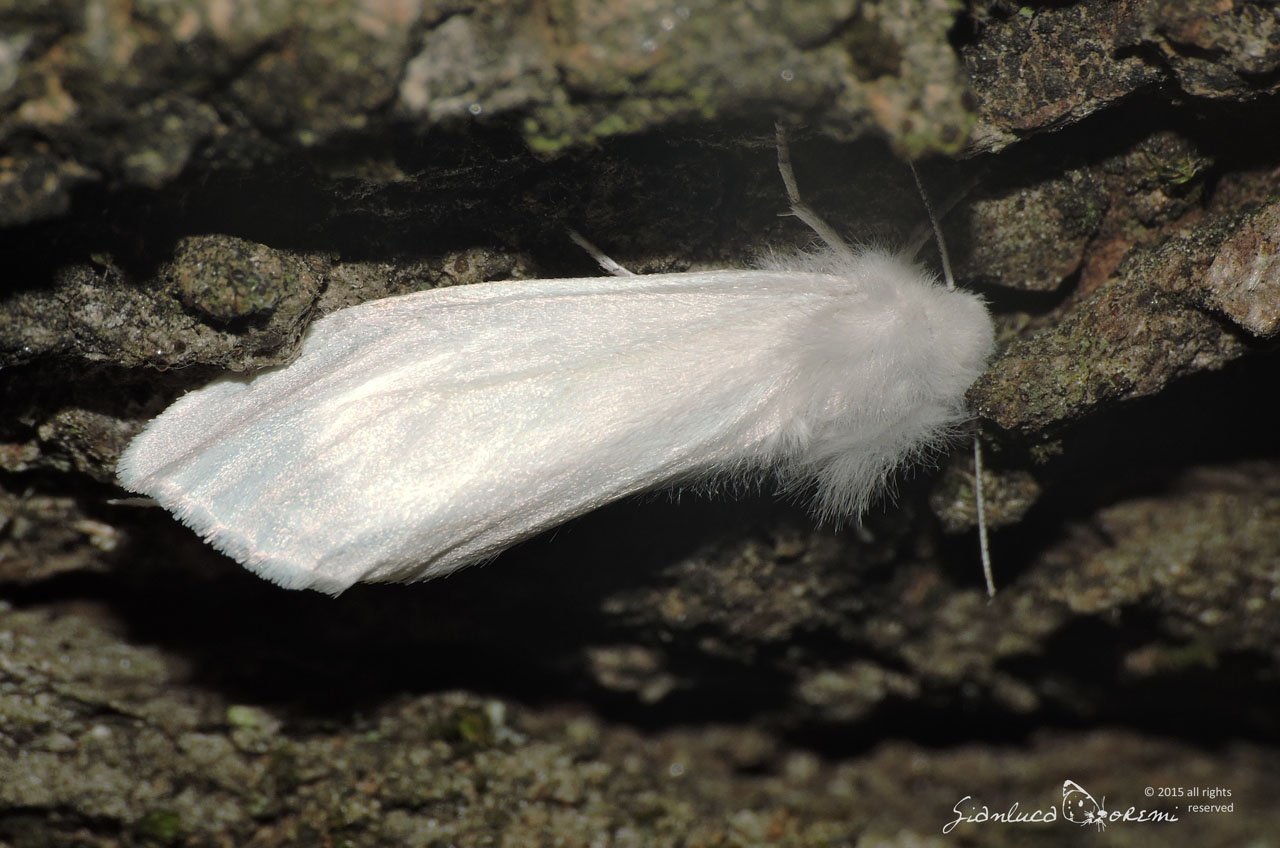
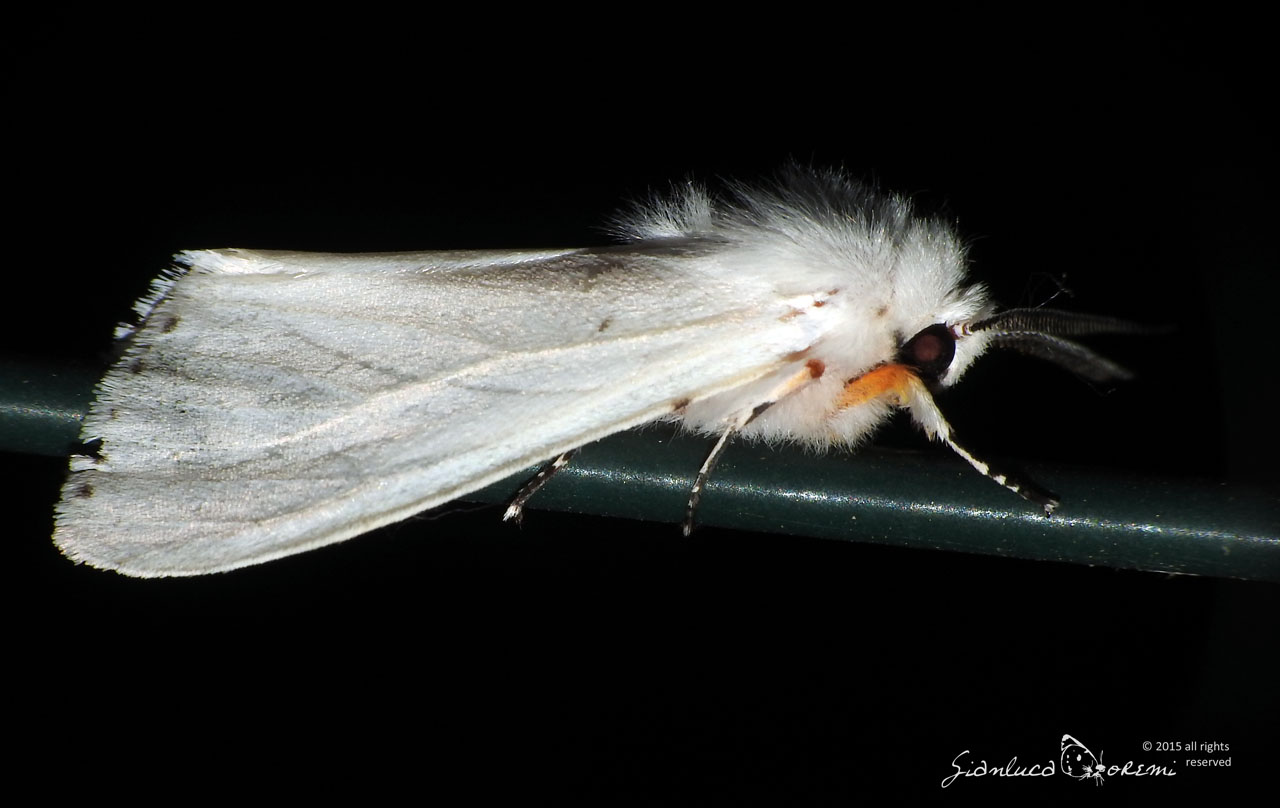

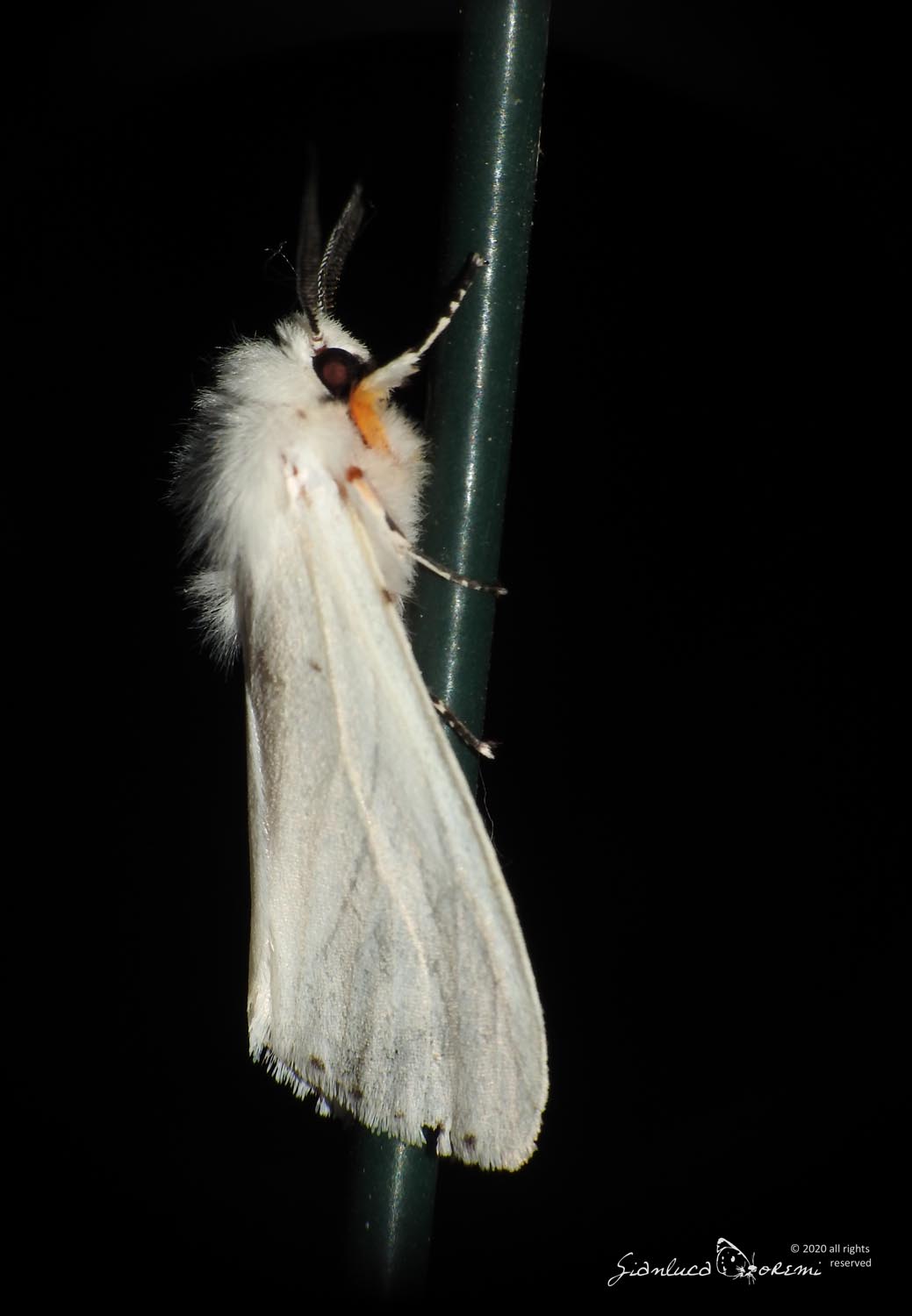
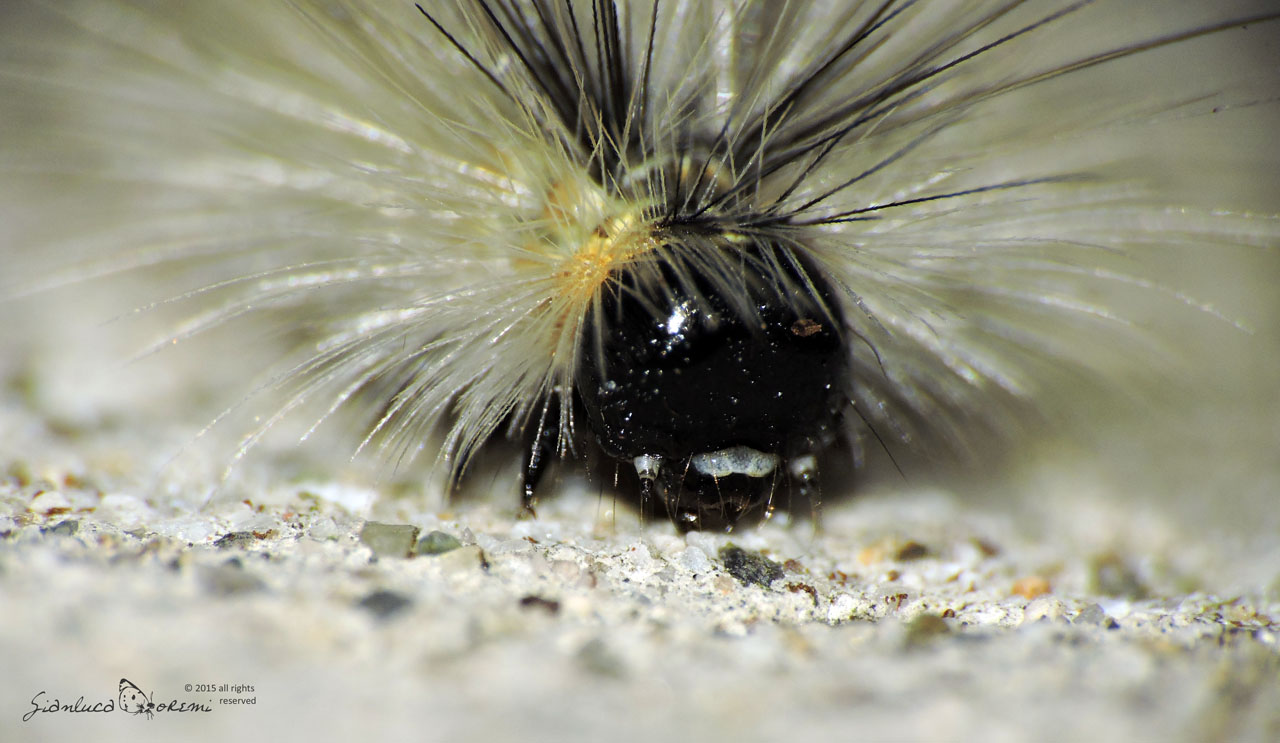
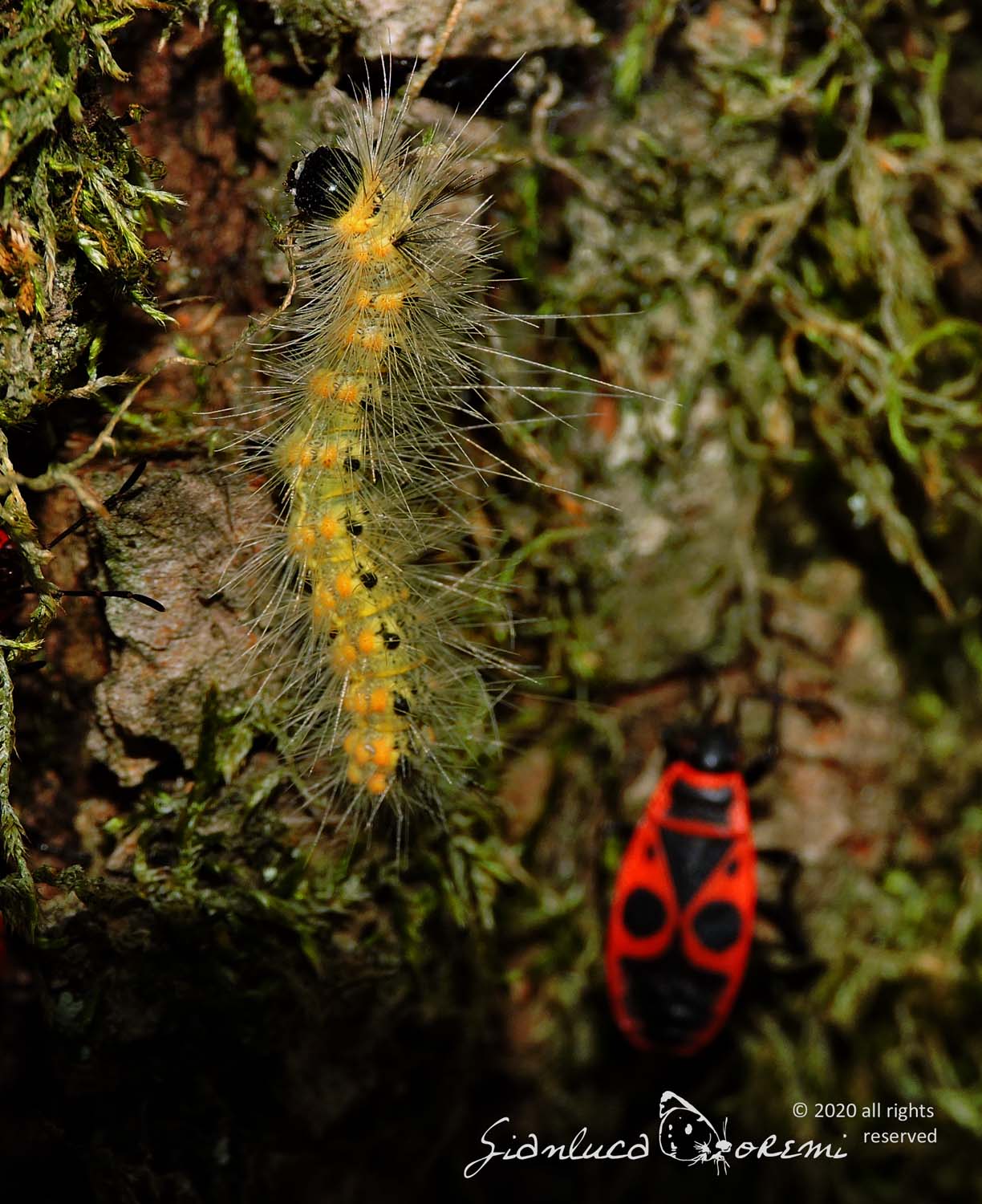
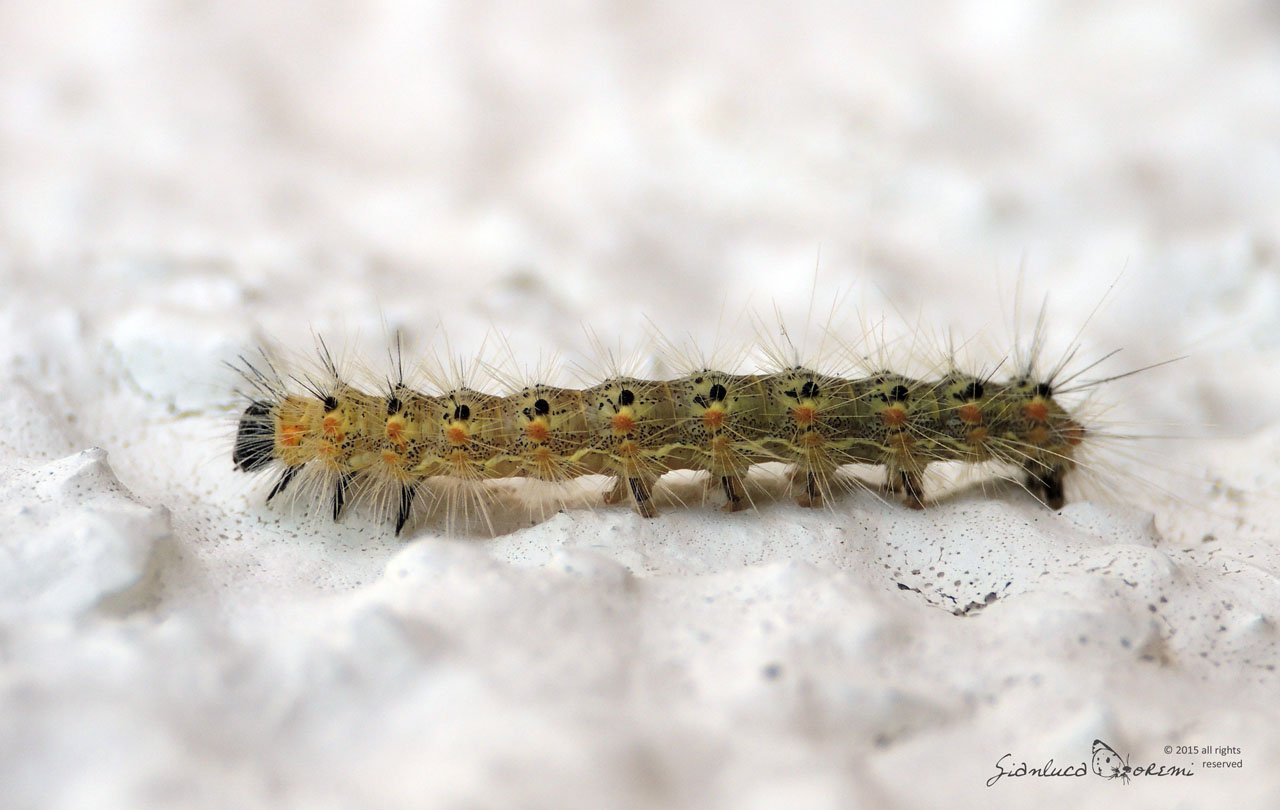
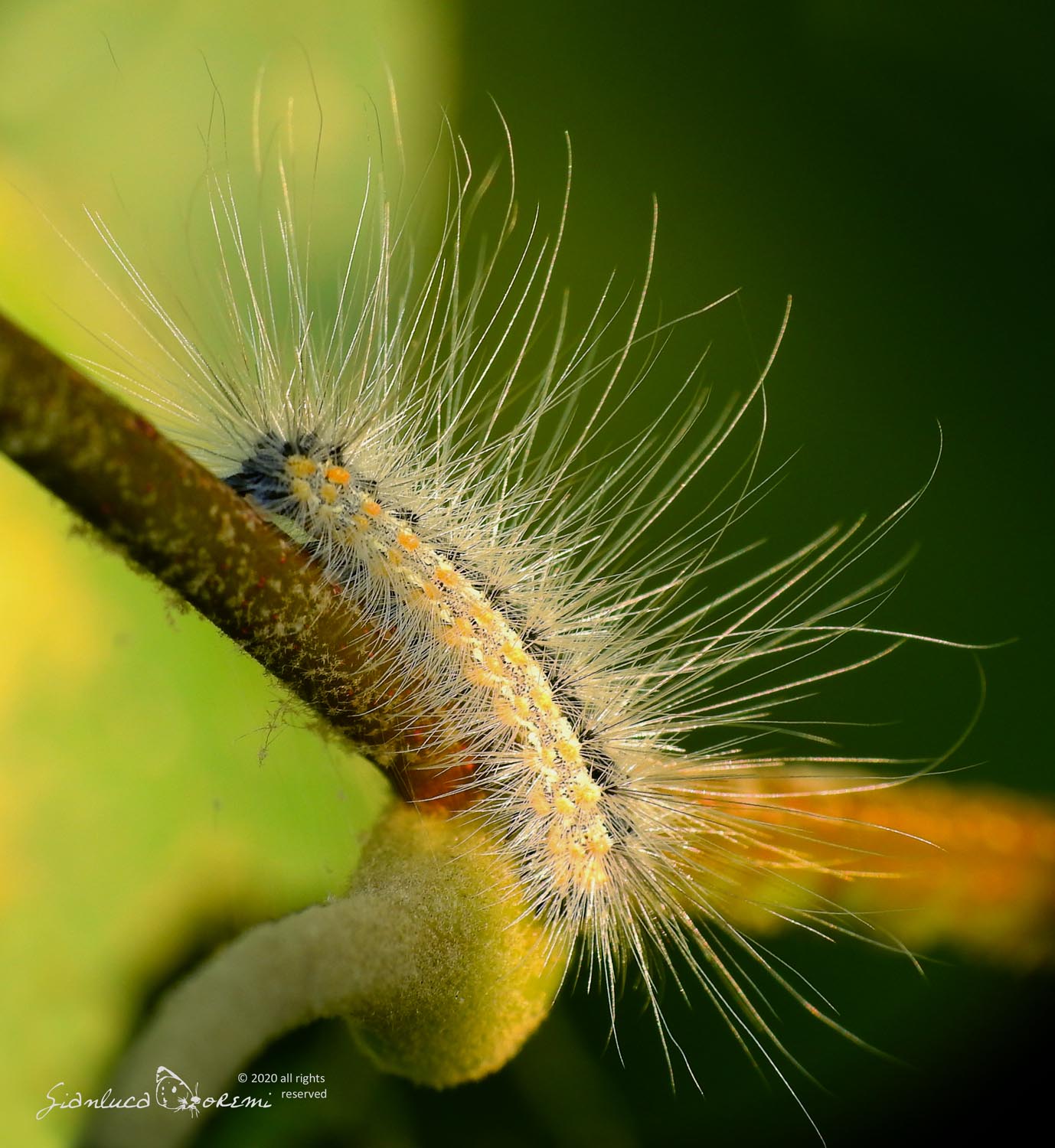
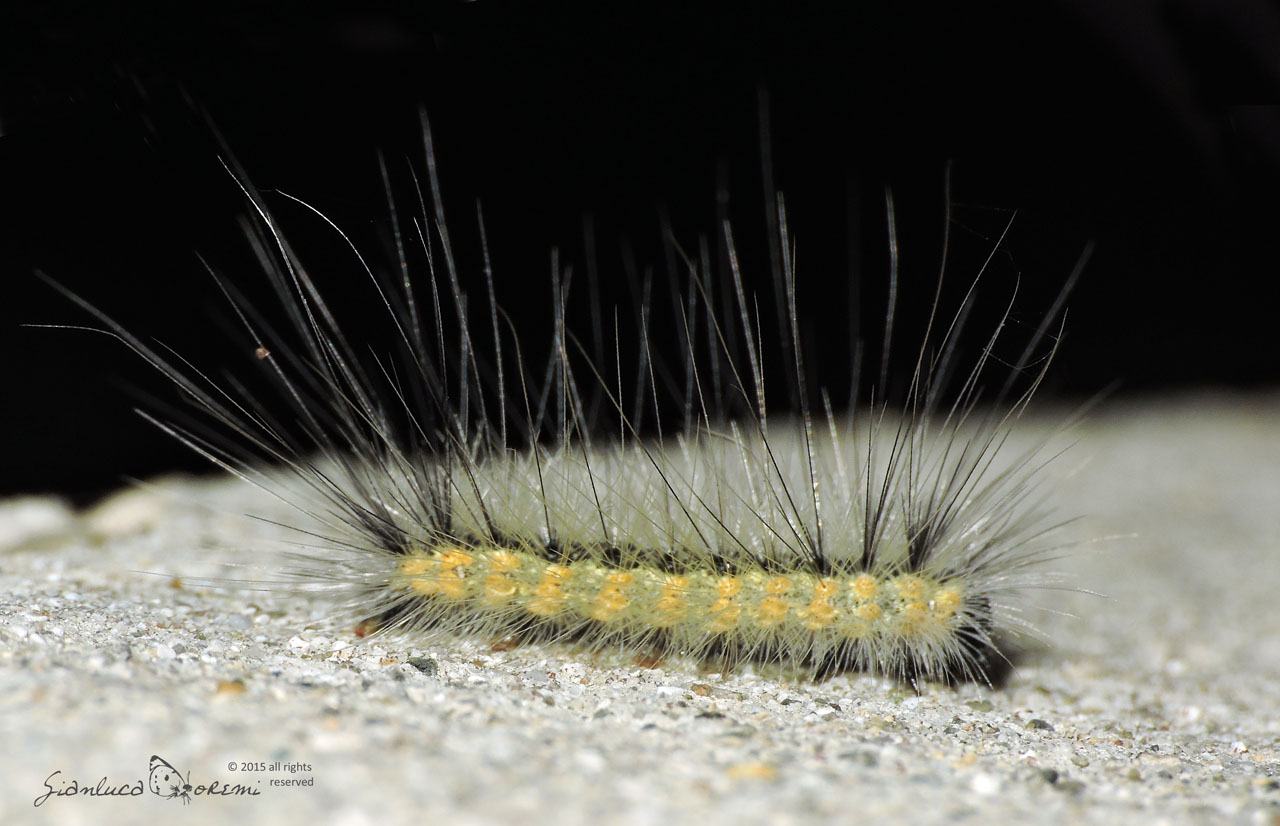
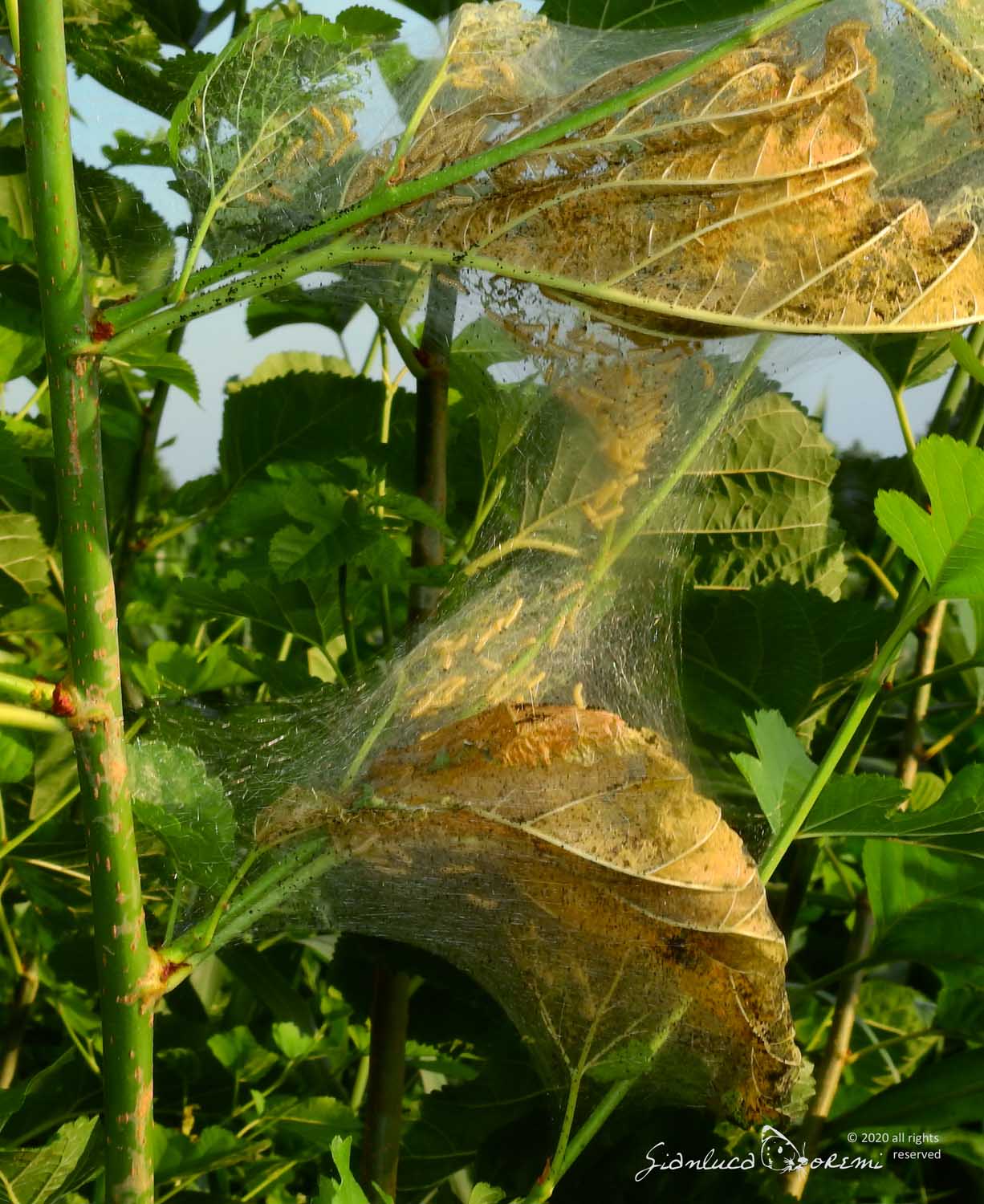
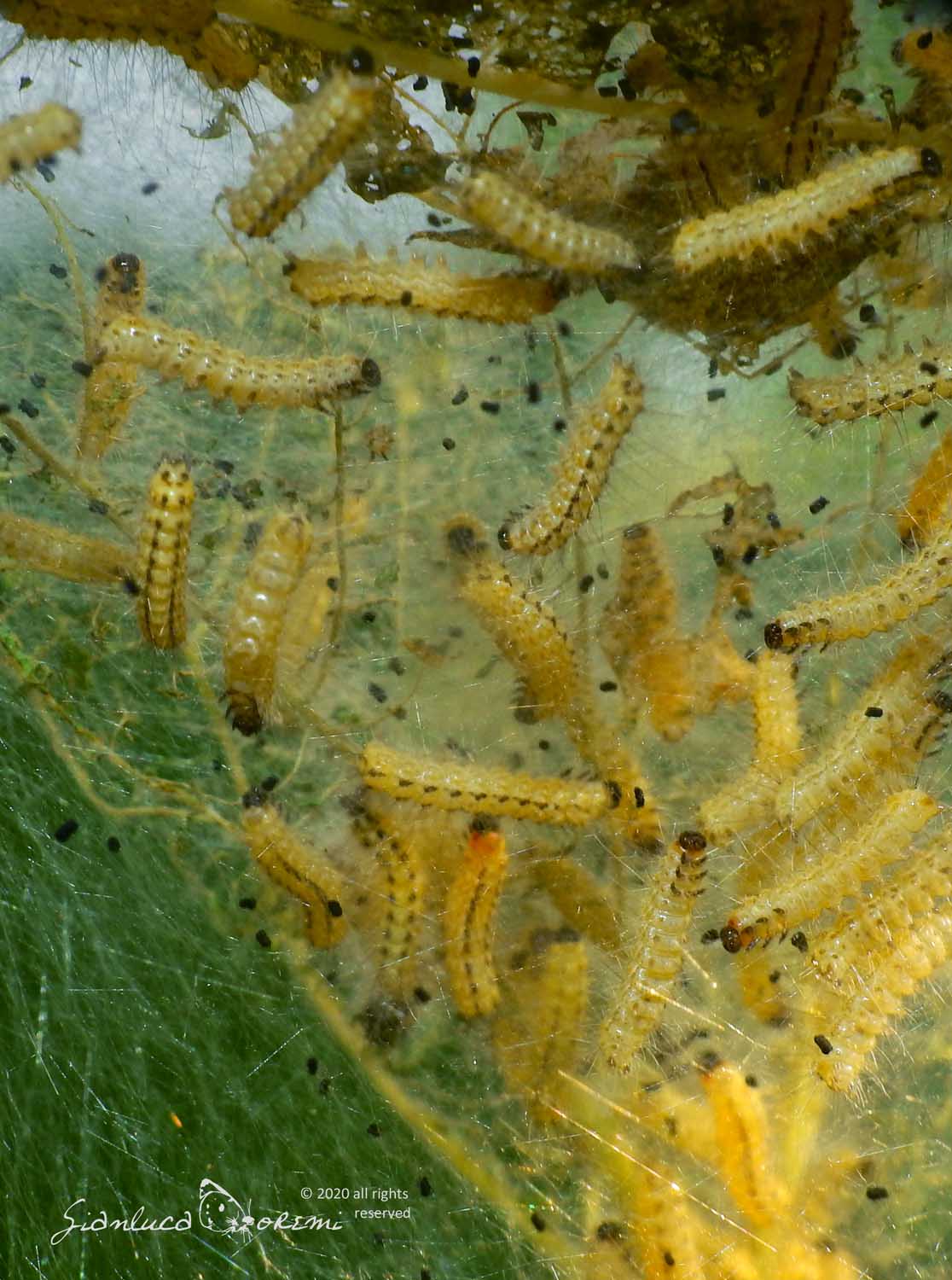

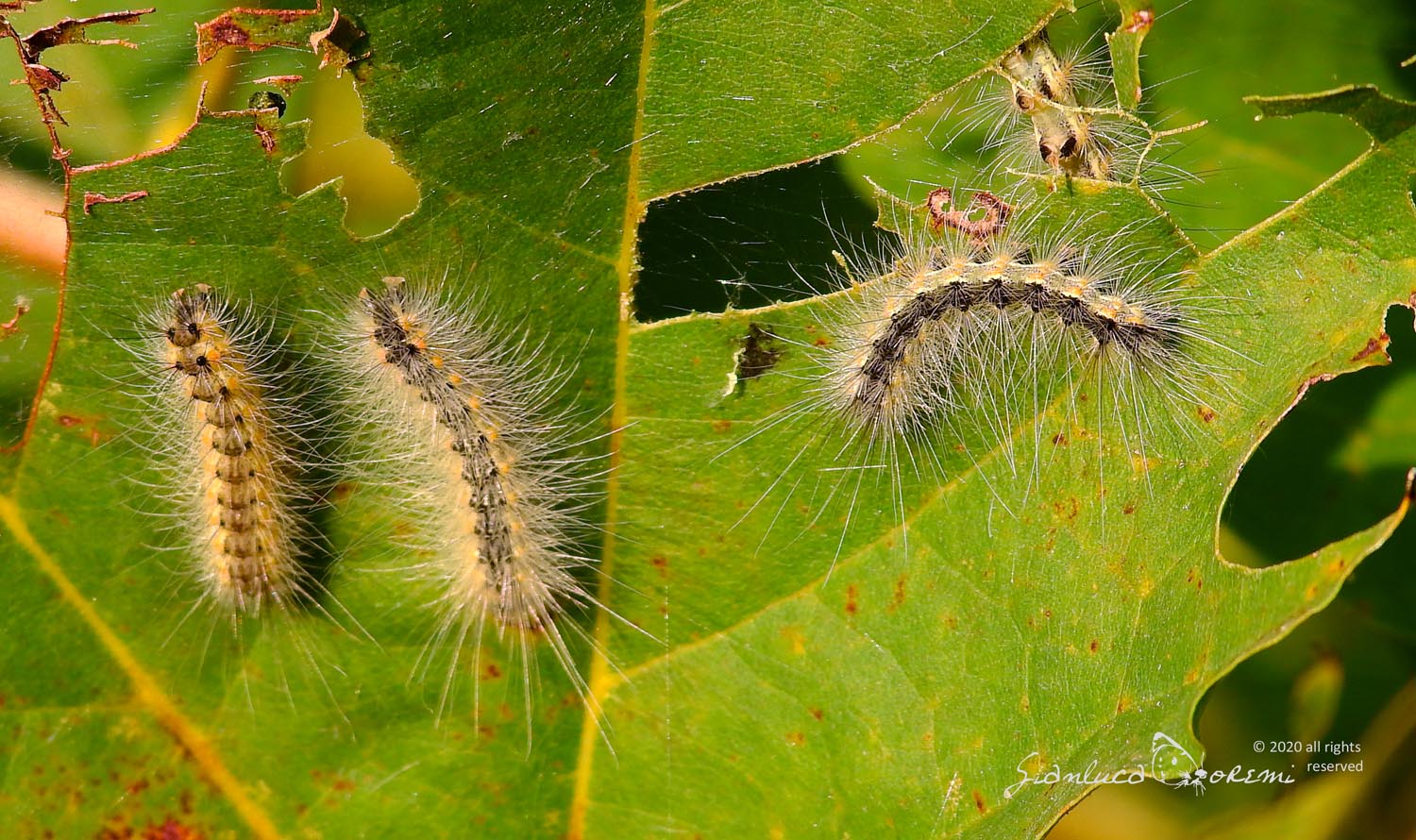

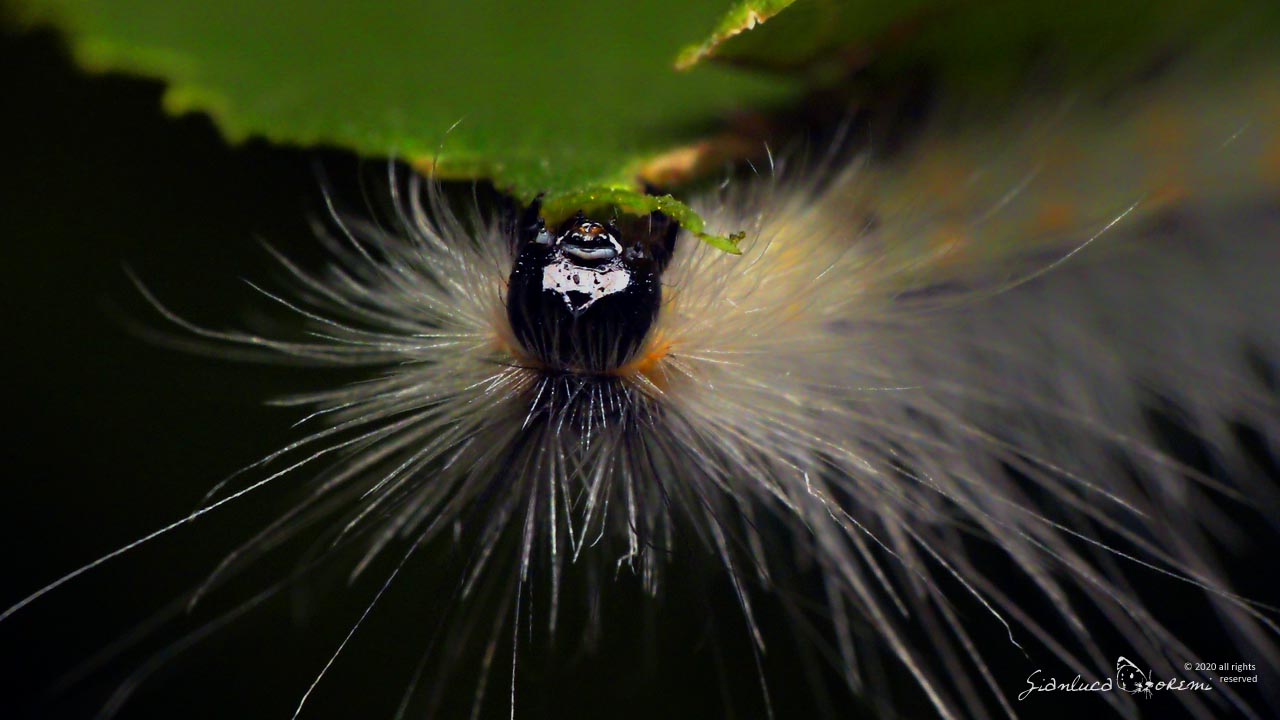
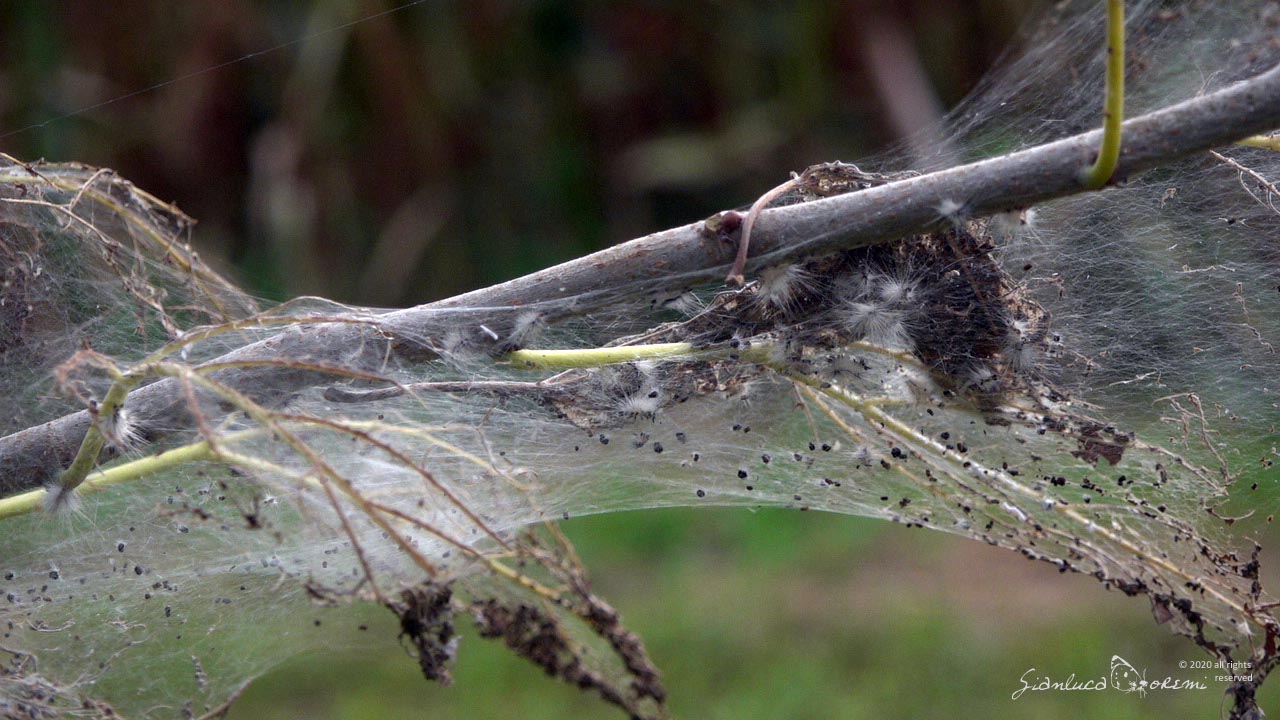

 EN
EN ITA
ITA
Social and publications